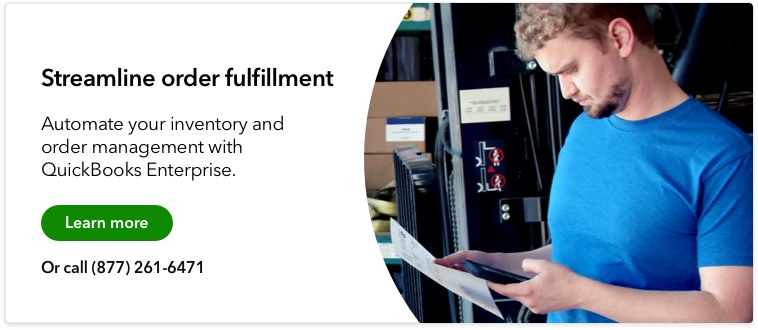Production planning is the process of optimizing the manufacture or sale of a good from the moment it’s ordered to when it’s delivered. A business should have an efficient process in place for making a quality product when it is ordered and have the fulfillment capabilities to deliver it on time. Production planning takes a business through each step of the process to ensure the process ends with satisfied customers.

What is production planning and how can you use it?
What is production planning?
Effective production planning is a vital part of business operations for finding cost efficiencies and protecting the bottom line. Production planning is a preemptive process that enables businesses to optimize their resources, enhance worker productivity, and increase customer loyalty.
Let’s take a look at production planning from the perspective of a manufacturer, where we can see basic production planning and control in motion.
With the anticipation of increasing sales, manufacturers should assess certain factors that contribute to producing quality products and happy customers.
Initially, you’ll want to make sure you have an adequate supply of raw materials on hand to fill the order from a quantity perspective. If you have enough material requirements on hand, it will be easier to arrive at the cost of production from an existing bill of materials.
Depending on the size of that initial order, the next variable to look at is capacity planning. Judging by the quantity ordered and other obligations you may have in the pipeline, you should know whether you can meet production capacity by the time the customer expects delivery. If not, you may need to add square footage or machinery to your production facility.
Labor management is another key factor in production planning. At present staffing levels, will you have enough production workers to satisfy customer demand? Or will you need to hire more personnel or run more shifts?
Manufacturing companies are the most common type of business when resource planning comes to mind. However, retailers will utilize similar methodologies and forecasts when peak holiday shopping seasons require that supply equals increased demand.
Likewise, distribution facilities can use production planning in procurement to ensure they can fulfill their buyers’ needs. Naturally, the manufacturing process doesn’t apply in retail or distribution, but a careful analysis of supply chain dynamics are just as important to their success.
What are the benefits of production planning?
When you break down and analyze all pieces of the manufacturing process, you can gain insights on what improvements need to be made to increase efficiency and boost margins. Here are a few specific benefits of production planning.
1. Setting measurable baselines
Collecting and analyzing data along the production line can give insight into your manufacturing capabilities. Data analysis can offer a benchmark for performance in facets such as capacity utilization and manufacturing cost per unit. You’ll want to know where you stand on these key performance indicators to gauge how much output the business can handle in a certain time period and where you should price products.
2. Eliminating waste
Managing production is a delicate balance between supply and demand. Strategies like just-in-time inventory management are capable of sourcing materials quickly when demand soars beyond projected levels.
3. Improving workflows
As production batches are completed and details begin to emerge from your analysis, you might discover issues with the way the production process is designed. Perhaps a piece of machinery needs to be moved to optimize the flow on the shop floor. Maybe certain employees perform better at different stages of the production workflow.
How is production planning different from production scheduling?
Planning production runs involve determining which materials you have in stock, which ones you’ll need to order, how much the batch is expected to cost and when the order can be completed.
With a production schedule, you’ll dig into specifics outlined in the planning phase and schedule it into your production shifts. A more detailed accounting will determine exactly how much raw material you’ll need for an order, how many shifts you’ll need to run, and when each step of the process will take place.
5 common steps of the production planning process
Here are some common steps most businesses go through in a production planning cycle. Some stages may be sequential or occur in concert.
1. Demand forecasting
Whether you make projections based on a prior time period or based on new sales, you’ll want to forecast demand to cut down on waste, keep costs at bay, and boost efficiency along with your bottom line.
2. Routing
Production routing is laying out the path that the production run will take. It looks at each physical phase as part of a roadmap that a product will pass through—from receiving raw materials through fulfilling customer orders.
3. Scheduling
Scheduling will hash out the lead times for planning stages, such as the number of man-hours you’ll need to complete a run. Proper allocations of labor might mean hiring additional staff for expanded shifts or offering overtime work to more productive, existing employees.
4. Measurement
As each phase of production is in motion, putting a prescribed process flow in place to measure actual results versus expected results will help ensure that your project is on schedule and your costs are within an acceptable range of deviation.
5. Adjustment
If there are realized shortfalls in material or manpower, making adjustments on the fly will help ensure that the production run does not finish with major cost overruns. Having the tools and agility to recognize when, how, and where to tweak the process will help keep predicted profits in line with realized goals.
Best practices for production planning
Whether you’re taking a closer look at your production process or starting a new production line, there are a few best practices to keep in mind for production planning.
- Clear communication with all stakeholders—from ownership to human resources to production workers—is essential for creating a production workflow that is efficient and profitable.
- Create an effective way for employees to spot potential bottlenecks or production flaws in real-time so that they can be resolved and incorporated into your planning.
- Establish performance benchmarks to measure future efforts against and set expectations for enhanced objectives and higher goals.
- Be on the lookout for tasks that can be automated so your resources can be efficiently allocated along the production line.
- Build checkpoints into production so errors or mistakes can be reported and resolved soon after they’re identified.
3 common mistakes in production planning
There are oversights and unwelcome surprises that you’ll want to be wary of before you undertake production planning. Not every wrench in the works can be anticipated, but you’ll have a better grasp on how to react if and when it does occur.
1. Lack of equipment maintenance
With mechanical devices, it’s difficult for manufacturing businesses to predict how and when they might fail. Neglecting maintenance on machines prior to changes in production is asking for trouble and regular equipment checks are important in preventing shutdowns.
2. Weak capital investment
Unforeseen circumstances may have you tightening budgets and purse strings. However, an unwillingness to invest in machinery, technology upgrades, and planning tools can leave your business at a distinct disadvantage relative to your competitors.
3. Resistance to change
For established businesses, keeping up with technology advances can be difficult. But the benefits of being able to forecast demand and maintain an efficient production line far outweigh the costs of changing processes.
Final thoughts
Running high-quality products off the production line and getting them to customers on time is the goal of any product-based business. Doing this consistently is difficult, especially when uncertainty is added to the mix. A dedicated production planning effort can help prevent future production problems and improve margins by increasing operations efficiency.



